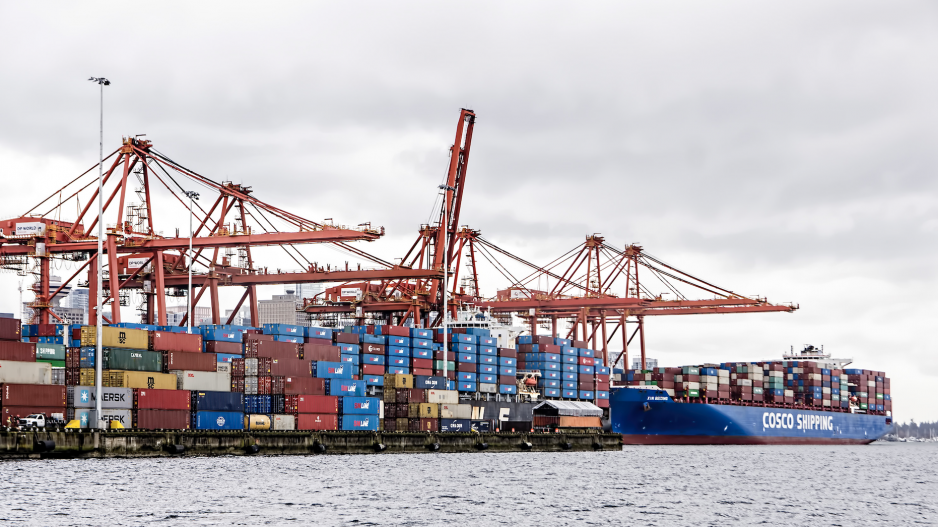Too much capacity, too little demand, not enough dedication to decarbonization. Bottom-line result: a net income nosedive from US$296 billion in 2022 to a projected US$16.5 billion profit this year and a US$10 billion loss in 2024.
That’s the executive summary for ocean carriers servicing the transpacific and other key trade routes, courtesy of the most recent market update provided by U.K.-based shipping consultancy Drewry.
Outlining some of the key findings during Drewry’s April 25 container market outlook Simon Heaney, the company’s senior manager of container research, noted that container cargo shipping rates have dropped to break-even or below levels on the transpacific and Asia to Europe trade routes.
“Demand both in terms of port throughput and loaded trade volumes remains very weak,” Heaney said. “The order book [for new ships] for this year and next is still vast and will start to land with more vengeance very soon.”
According to global shipping data company Alphaliner, the world’s 11 largest ocean carrier companies are scheduled to take possession of 89 large container ships this year, 31 of which are megamax vessels that can carry 24,000 20-foot-equivalent units (TEUs). In total, orders for new ships add up to about 25 per cent of the current global fleet.
Further complicating the supply and demand pressures on carriers is that far fewer older ships are being removed from the market. According to Drewry estimates, 81 per cent of new-build orders are for ships that can run on liquefied natural gas or other alternative fuels, Heaney said owners are not removing enough of the older, more polluting ships from the global fleet.
So, even though Drewry notes that shipping rates in both spot and charter markets have recovered slightly since the previous quarterly update, Heaney said he is not convinced that the rate increases signal an imminent turnaround for ocean carriers.
“In our view, the uptick in spot rates and charter high prices is something of a transitory illusion. And as the new builds flood in, the pressure on both of those markers, is going to become a sort of an irresistible force [that] owners and operators are not going to be able to bat away.”
He noted that the growth in container throughput at major global ports rose a mere 0.5 per cent in 2022 and is anticipated to remain at a similarly low level of 1.0 per cent this year.
Compare those numbers with 2021 when that container throughput growth jumped 7.0 per cent, which was the highest increase in 10 years.
Meanwhile, the slowdown in demand has dramatically reduced what has been historically congestion at West Coast North American ports and container terminals. That has effectively increased capacity another 25 per cent, further eroding rates and market leverage for ocean carriers.
Drewry forecasts that global freight rates will drop by a whopping 59.8 per cent in 2023 and another 13.7 per cent in 2024.
Heaney noted that Europe and North America “look like being the sick dogs this year as far as demand is concerned” as inflation and high interest rates put more pressure on consumer spending.
Inbound container traffic numbers confirm that observation.
According to container shipping analyst John McCown, those numbers at the top 10 U.S. ports dropped 32.2 per cent in March compared with the same month in 2022. It was also the sixth straight month of double-digit declines of inbound container traffic. West Coast ports, he noted, fared even worse. Their average drop in inbound containers was 35.4 per cent in March.
@timothyrenshaw




